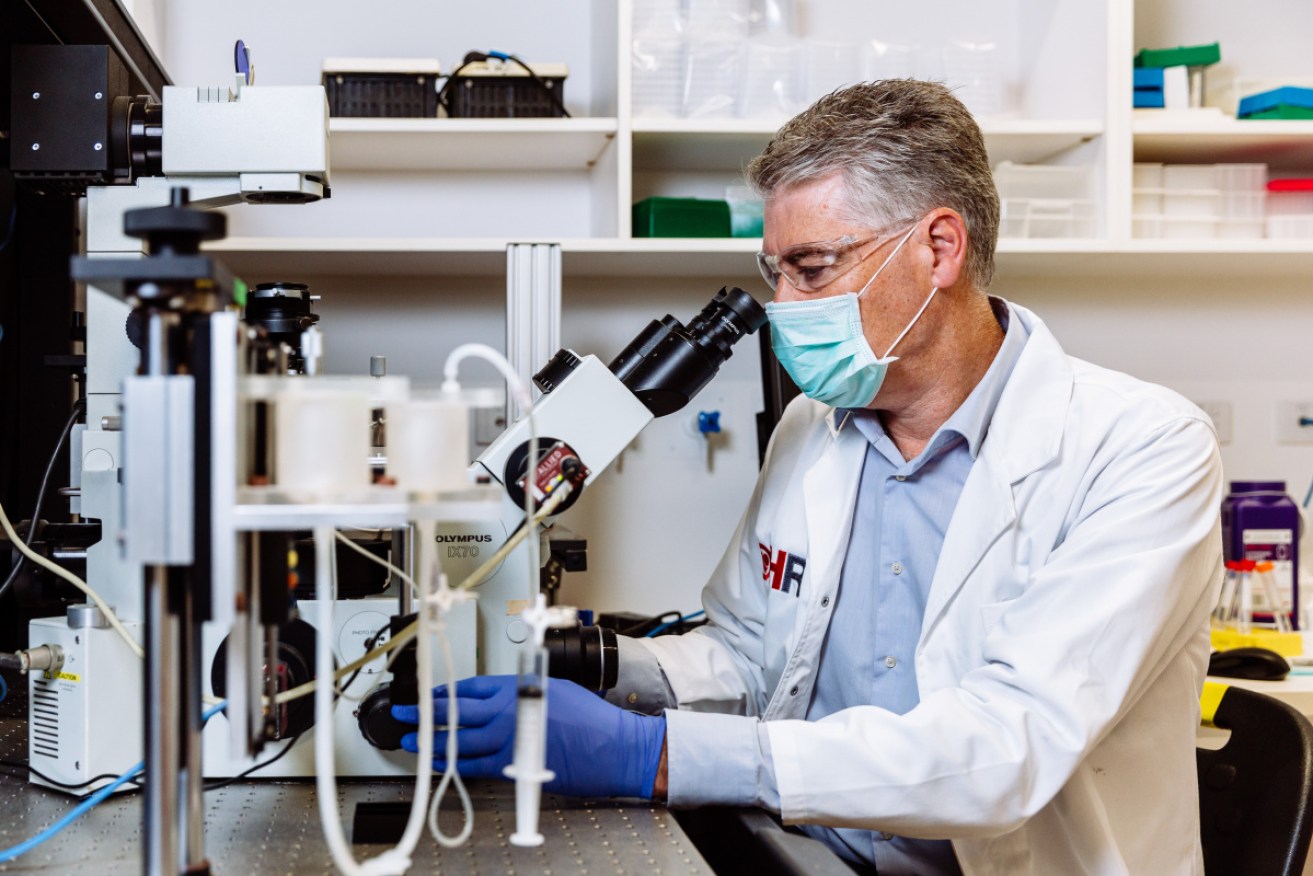Scientists have made a breakthrough on strokes. Australian bush ticks hold the key


The saliva of the Australian bush tick contains a life-saving protein, researchers have found. Photo: Heart Research Institute
It has become a silly old cartoon. The scene where a scientist is beavering away in the laboratory, when suddenly his test tube changes colour and he yells, “Eureka!”
Scientists say this doesn’t happen. But sometimes it does.
Five years ago, Professor Richard Payne, a world-renowned chemist from the University of Sydney, approached Professor Shaun Jackson of the Heart Research Institute with a number of modified proteins extracted from the saliva of an Australian bush tick.
Bush ticks are blood lickers. Their saliva contains anticoagulant proteins that allow them to feed without interruption from blood clotting – and Professor Payne had been analysing and modifying these proteins.
One of them in particular was freaky – and the cause of much excitement for Professor Jackson, who had been working on clotting issues for 20 years.
Here was a molecule that could open up blood vessels but somehow avoid causing catastrophic bleeding.
Here, it seemed, was the answer to saving people from dying from a stroke, or ending up in a nursing home.
“This didn’t look like anything I’d ever seen before … it was completely unexpected,” Professor Jackson said.
He didn’t say “eureka” – he simply said “wow”.
This is why it is a big deal
About 50,000 Australians suffer a stroke each year.
About 85 per cent of these strokes are caused by a blood clot restricting blood flow to the brain, known as acute ischaemic stroke (AIS).
Most people don’t make it to the hospital within the ‘golden hour’ – those crucial 60 minutes after a stroke when patients have a better chance of survival and avoiding serious disability.

A tick engorged with blood after feeding. The critter’s salvia contains anticoagulants. Photo: Getty
There is only one drug therapy for stroke: A clot-busting drug called tPA. But it helps less than 10 per cent of all stroke patients, largely because they get to the hospital too late.
“If you get to the hospital in time, tPA works beautifully,” Professor Jackson said.
“But the longer you leave it, [the harder it becomes] to break up the clots and [the] more likely you’ll get bleeding on the brain.”
Hence, there’s an urgent need to find new anticoagulant therapies that can improve the clot-busting function of tPA.
But those that have been trialled increased the risk of “life-threatening” bleeding on the brain.
“We haven’t been able to get blood thinners that don’t cause this bleeding on the brain,” Professor Jackson said.
The tick protein appears to solve the problem – as found when tested with tPA in pre-clinical trials with animals.
“It’s a new type of anticoagulant and works in a different way,” he said.
“We haven’t seen this before. We’re trying to fully understand what it does.”
The pre-clinical trials and analysis will continue for another two years. All going well, the new drug, known for now as AIS109, will start going into people, in phase one clinical trials.
The researchers have received a grant from the Australian government’s Targeted Translation Research Accelerator (TTRA) program to continue their work.
This isn’t the first critter to further medical research.
The New Daily previously reported that a molecule in the venom of the Fraser Island funnel web spider can “prevent damage caused by a heart attack and extend the life of donor hearts used for organ transplants”.








